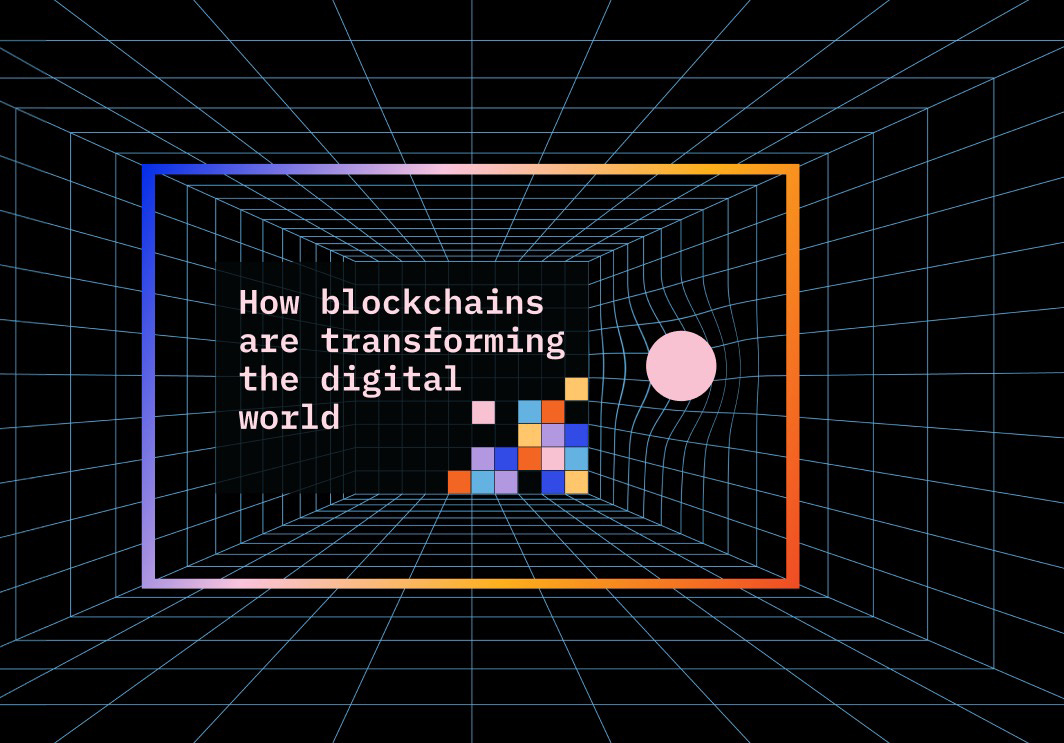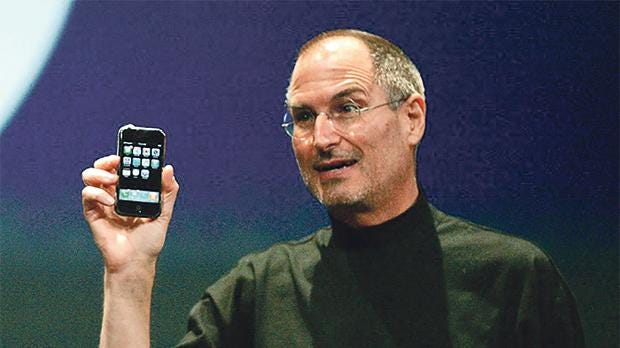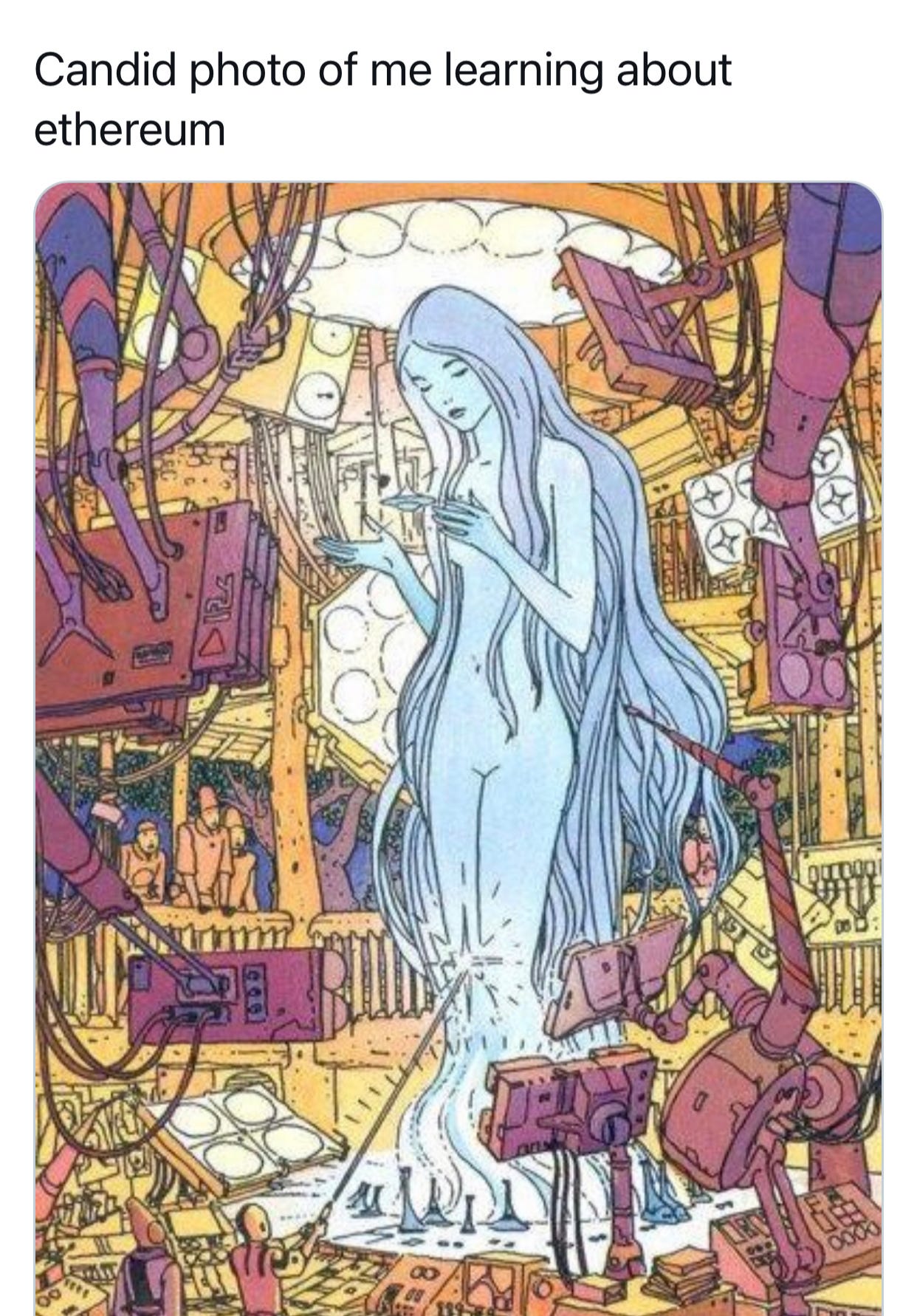How blockchains are transforming the digital world
A beginner's guide to blockchains and cryptocurrency
There’s a lot of talk about blockchains lately. Much of it is shrouded in hype around buying cryptocurrency and getting rich overnight. That does happen to some people who invest in blockchain projects, and visions of vast riches are often what draw people to blockchains and crypto in the first place, but it’s not the most important part of this new technological landscape.
When you start to understand the new systems and marketplaces that blockchain technology allows us to create, that’s when the real excitement begins. Blockchains have already started revolutionizing our digital world. As more of our lives move online and lines between digital and physical continue to blur, things are going to get very interesting.
The discussion around blockchains can be esoteric and confusing. People without technical knowledge are often turned off or overwhelmed by jargon and pretense before they even get started. I'm writing this for people who don't work in the technology industry and have no reason to know how computer networks are structured, let alone why blockchain technology is an important revolution in this structure. It's my goal to get my artist, musician, and writer friends excited about the possibilities of blockchains and to help them understand how blockchains are being used to build a more equitable, open, and creative internet.
This guide is by no means comprehensive but it will give you a basic overview of how blockchains work, examples of new projects, and a preview of what is on the horizon.
How are cryptocurrencies and blockchains related?
The first time most people hear the word “blockchain” it’s because of cryptocurrencies like bitcoin and ether. Cryptocurrencies are pieces of a blockchain network. When you buy bitcoin, you are buying a piece of the bitcoin blockchain. When you buy ether, you’re buying a piece of the ethereum blockchain.
In blockchain systems, the users of the network are the owners of the network. Owning cryptocurrency is owning a piece of a blockchain network. Imagine if just by using and contributing your data to Google, you were rewarded with Google stock. Blockchains make this kind of incentive structure possible.
In addition to this blockchain explanation, I've written a how-to guide on buying and holding cryptocurrency. If you plan to buy crypto, I recommend reading both posts beforehand so you understand what you're buying. This will help you keep the faith in your long term investment when you watch your money dip 30% or more in a day or two.
What is a blockchain?
A blockchain is essentially a new type of computer. It's a virtual computer, one that runs on a network of physical computers (sometimes referred to as nodes or miners), to create a secure database that is maintained and operated by every node of the network. [1]
This is the first time in human history that we’ve created a way to govern networks with no centralized ruler. We can use these networks to coordinate and cooperate with people around the globe without needing a trusted third party to facilitate transactions or agreements. This will allow us to break apart monopolies into markets that are owned and operated by their participants.
You know the old axiom about absolute power corrupting absolutely? Blockchains are the best hedge against corruption we’ve come up with so far. They’re certainly not perfect, but all new technologies have faults and flaws that get smoothed out over time. I’m very optimistic about the future of blockchains.
Bitcoin is the first blockchain, it was created just after the 2008 financial crisis as a way to transfer value directly, peer to peer, without needing to rely on a bank to record the transaction to a centralized ledger. On the Bitcoin blockchain, each node keeps a full copy of the blockchain ledger. Individual nodes sync new transactions that are then confirmed by other nodes of the network into a new “block” in the chain. The design and mechanics of blockchains are governed by their code and confirmed by the distributed network, they are not alterable by a central company or institution.
To understand why blockchains are so revolutionary, let's look at how computer networks have been historically structured.
Network basics
Aside from blockchains, the internet is essentially comprised of two types of computers. The first kind is what most people think of when they hear "computer" - your personal computer, laptop, or phone. This is your individual portal to the internet.
The second kind of computer is often referred to as a server, but could be called a cloud computer. "On the cloud" really just means on someone else's computer. Large companies have server farms full of data that comprise their individual networks.
An example of this for individual use is iCloud. Customers rent server space from Apple to free up space on their personal devices. Companies and organizations use cloud computing services like Amazon Web Services (AWS) to rent computing power, storage, and databases on an as-needed basis instead of buying, owning, and maintaining their own physical data centers and servers.
Companies like Facebook and Google allow you to rent space on their servers too. In this case, you pay them with your data. These companies track everything you do online and sell that data to third party advertisers. They are incentivized by this business model to increase your time on their platforms and track your every move, which has made us all into digital serfs of sorts. We post our creative output for free and our endless stream of user generated content makes a very small group of people incredibly wealthy.
Enter the blockchain
Thanks to innovations in cryptography and distributed systems, data can be encrypted and stored securely across a network of nodes, rather than centralized into the databases of a few wealthy organizations. These blockchains can operate like public infrastructure that supports an open internet, rather than private monopolies that control the world’s data and information.
We are living in the Information Age. Some of the most powerful companies in the history of planet earth have a monopoly on one thing only: our data. Blockchains have the potential to radically transform and redistribute this concentration of power.
Blockchain technology is still very new. At this stage it can be slow and difficult to use for the average consumer. All new technologies have a learning curve that gently declines over time. If you’re reading this now, you’re still extremely early to blockchain technology.

What can we build?
There is a massive effort underway to rebuild internet infrastructure and reimagine how humans connect and share value with one another. I chose to say that “we” can build these networks because I want everyone reading this to get involved and start imagining what our future networks could look like. If blockchains are to be truly decentralized and distributed, they need to be accessible, understandable, and inclusive to a broad range of people.
Our future social platforms may be structured as “Decentralized Autonomous Organizations” or DAOs, in which network design decisions are made not by a small group of Silicon Valley executives, but by everyone who uses the network. What would it look like for users to vote on the rules of a platform? Would different platforms emerge with radically different rules around freedom of speech? What would privacy look like? Would there be some networks attached to your true identity as a requirement, and some where anonymity is encouraged? None of these questions have been answered, and none of these networks have been created. This is the area of blockchain development that I see as most fruitful and interesting: the intersection of technical possibilities and messy, chaotic human needs and experiences.
The ability to move fluidly between different social platforms is another exciting possibility made possible by blockchains. In the not so distant future, it will be possible for every person to have their digital identities stored on a blockchain. This will allow each individual to control their own data and bring it with them across different social platforms. If you leave one platform, you should be able bring all of your content and followers with you, and unlike current social platforms, all of your creative output should belong to you.
Existing blockchain applications
Let’s look at a few different blockchain projects that are ready for you to use and explore. In the art space, Ethereum has allowed digital artists and musicians to sell their previously ephemeral works while retaining control and ownership. The Handshake blockchain allows you to own your name on the new decentralized web (dWeb for short). A storage platform called Sia lets users store files on an encrypted blockchain network instead of on a not-so-private Google server. If you’re interested in finance and investment, you can use decentralized finance platforms like Uniswap to trade different tokens and to earn interest on your crypto investments.
Ethereum Art World
The Ethereum blockchain allows any type of contractual agreement to be confirmed and committed to its network. This has created new and exciting possibilities for digital artists, who can turn their visual art into “NFTs” or non-fungible tokens. NFTs are unique digital works that are forever tied to the Ethereum address of their creator. You can choose to create just one edition of an image or animation, or a number of editions that can be owned by multiple patrons.
Artists can mint their work on an NFT platform and choose to accept bids from art buyers. Each and every time an NFT artwork is resold, the artist can choose to get a percentage cut of the sale. On platforms like Zora, this percentage cut will forever be enforced with no need for artist representatives and lawyers to get involved. This completely upends and democratizes the art world. In the old fine art model, new artist’s works could be flipped and sold by collectors for massive profit without a cent going to the original creator. That world is on its way out.
NFT artworks can be bid on and purchased through platforms like SuperRare, Rarible, and Nifty Gateway, among others. Famous 3D artist Beeple recently sold 3.5 million USD worth of work in a single weekend through Nifty Gateway.
For musical artists, there have been a few interesting experiments in minting music as an NFT. There’s also a music platform called Audius that aims to decentralize the music industry and empower artists to own their masters and share the upside with their most supportive fans. EDM artist 3LAU has written a fascinating essay on how the decentralized music industry could develop.
If you’d like to learn more about NFTs, I’ve written a short guide called Ethereum is eating the art world that will give you an introduction.
Handshake
Handshake ($HNS) is a blockchain that aims to replace the current DNS or Domain Name System. Domain names are how we navigate the internet. The domain name of this website is “substack.com/” because I’m publishing this essay using the Substack platform. Currently, internet users rent their domain names through a few centralized organizations like GoDaddy, or through website builders like Squarespace.
Handshake allows you to buy and own your top level domain on the HNS blockchain. An example of a top level domain is “com/” or “org/”. I purchased “nicole/” so now, if you use a browser that directs to the HNS network and type “nicole/” into the address bar, it will go to my website. On a DNS browser, “nicole.hns.to” will take you to the same place.
Puma Browser is one mobile browser that points to Handshake already. It’s also extremely easy to change your device’s DNS settings to point to HNS and navigate the decentralized web. HNS is backwards compatible with DNS, so all DNS websites can still be reached as expected.
I like Handshake as a project that could solve the digital identity issue. You can already use Handshake to set up a decentralized linktree called a dLink like mine. You can buy Handshake tokens and use them to buy your name on the Handshake blockchain through Namebase.
If you’d like to learn more about Handshake stay tuned, I plan to write another HNS specific guide.
Sia
The decentralized link project (dLinks) that I mentioned above was built using Handshake and Sia. Sia is a file storage blockchain project that allows any users running its software to rent out space on their hard drives. It’s a bit like an AirBnB for hard drive space.
Instead of trusting your storage with a giant like Google that sells your private data to advertisers, you can use Siacoin to pay other participants in the blockchain network to store your fully encrypted files. You could also rent out extra space on your own hard drive to make passive income. Because it’s a blockchain network, it is by its nature encrypted and decentralized, thus much more difficult to hack than a large centralized database.
None of your data is stored in the open on someone else’s hard drive, “all files stored through the Sia network are sliced into tiny pieces, so only a small portion of each is stored on any one hard drive. The files are also encrypted, so network users can be confident their data is safe from unauthorized access.” [2]
In the future, I imagine that anyone will be able set up and maintain their own servers to store blockchain data and make a regular income from this effort. Data storage small businesses could spring up all over the world.
Uniswap
One of the projects I’m most excited about is a decentralized exchange called Uniswap. It’s part of the “decentralized finance” movement, referred to as DeFi. Uniswap is a more democratized take on the traditional Wall Street market model. The project was built on the Ethereum blockchain, which allows smart contracts to be confirmed and committed to its network.
Currently, to trade stocks and securities on any exchange, those exchanges need to have something called liquidity. Liquidity is a large pool of cash that allows individual investors to buy and sell stocks without needing to wait for other individual buyers / sellers to match their trades. Liquidity provides liquid cashflow, it allows trades to flow through the market. On Wall Street, this liquidity is provided by market makers, large institutions like hedge funds and banks that loan capital to the exchange. These market makers lend their liquid capital to exchanges and make returns on the liquidity they provide.
Uniswap allows any individual with a little cryptocurrency and knowhow to become a market maker and earn interest on their cryptocurrency for providing liquidity. It is a truly crowdfunded market. Anyone can add their cryptocurrency into liquidity pools and earn “LPs” or liquidity provider tokens. Decentralized finance democratizes the power of Wall Street and redistributes it to the people. To learn more about DeFi, I recommend this beginner’s guide.
This is just the beginning
I hope this essay has given you a good primer on blockchain projects and ignited your curiosity to learn more. The future of our internet will be decentralized, distributed and owned by its participants. Blockchains give us the opportunity to equitably distribute value for our creative output and transform monopolies into community owned marketplaces. The creative possibilities are pretty exciting.
If you have any questions about blockchains, please feel free to comment on this article. I’d love to answer questions or point you towards more resources to learn. If you’d prefer to ask privately, reach out to me on Twitter. I plan to continue writing about blockchains, technology, and philosophy through this platform. If you’d like to receive my musings directly to your email inbox, please subscribe.
To dive deeper into blockchains, cryptocurrency and decentralization, I recommend this reading list.









